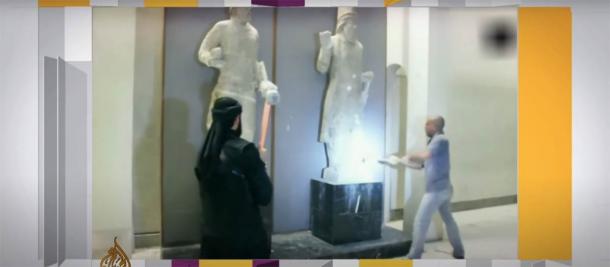On this day, 2,632 years ago, the ancient metropolis of Nineveh’s Falls. Explore the riveting saga of Nineveh, from its ancient splendor to its dramatic downfall, reshaping history and leaving an indelible mark on civilization.
A Glimpse into the Past: Nineveh’s Epic Fall

In the annals of history, August 10th, 612 BC, remains etched as a defining moment – the monumental collapse of Nineveh. This pivotal event finds its chronicle in the ancient Babylonia’s historical text, “ABC 3,” marking a seismic shift in the world’s largest city and the heart of Assyria.
The First Nineveh’s Falls: Nabopolassar’s Conquest
The stage was set for a cataclysmic transformation when Nabopolassar, the Chaldean ruler of Babylonia, seized Nineveh. This marked the astounding climax of the Neo-Assyrian Empire’s fall, an event that reverberated through the corridors of time as the “First” Fall of Nineveh.
Ancient Mesopotamia: Cradle of Civilization
Situated in the Fertile Crescent, Ancient Mesopotamia encompassed modern-day Iraq, Kuwait, Syria, Turkey, and beyond. The revelation of Nineveh’s ruins by French archaeologist Paul-Émile Botta in 1839 not only unveiled a treasure trove but also lent tangible credibility to the tales chronicled in the Bible.
Shifting Tides of Power: Assyria’s Unraveling
The empire’s foundation quivered with the demise of King Aššurbanipal in 631 BC, as Babylon’s shadow loomed. The ascendancy of Babylon’s general Nabopolassar in 627 AD heralded the fall of Assyria and the rise of the Babylonian Empire, culminating in the capture of Nineveh by Cyrus the Great in 539 AD.
The Unthinkable Alliance: Medes and Babylonians
To thwart the obliteration of Babylonia’s capitals, the Egyptians stood as Assyria’s allies. The Fall of Nineveh Chronicle recounts Nabopolassar’s clashes with Egyptian and Assyrian forces, ultimately leading to the rise of the Medes, who seized Nineveh in a pivotal moment of unrest.
The Medes-Babylonian Triumph
In a strategic alliance, Nabopolassar and the Medes’ King Umakištar orchestrated Nineveh’s siege, leading to its eventual downfall in July of 612 AD. The shockwaves of Nineveh’s demise rippled across the ancient world, a testament to the event’s profound impact.
A Modern Tragedy: Second Nineveh’s Falls

Fast forward to 2015, and Nineveh faces devastation anew, this time at the hands of ISIS. The wanton destruction of invaluable artifacts, including the iconic Assyrian winged bull, sends shockwaves through history and highlights the destruction’s gravity.
Cultural Vandalism: ISIS and Nineveh

The obliteration of cultural heritage by ISIS transcends vandalism, being labeled a “war crime.” As the group aimed to attract sympathizers and provoke global reactions, the world watched in dismay as priceless remnants of history were reduced to ruins.
A Beacon of Hope: Restoration Efforts
In 2017, the recapture of Mosul by Iraqi troops initiated a glimmer of hope. The restoration of part of the Mosul Museum serves as a poignant reminder of the resilience and determination to safeguard history against the onslaught of destruction.
Conclusion
The dual falls of Nineveh, separated by centuries, stand as poignant markers of human history’s ebb and flow. From the seismic events of ancient empires to the tragic chapter written by modern extremists, Nineveh’s story is one of resilience, upheaval, and the enduring quest to preserve our shared past.



